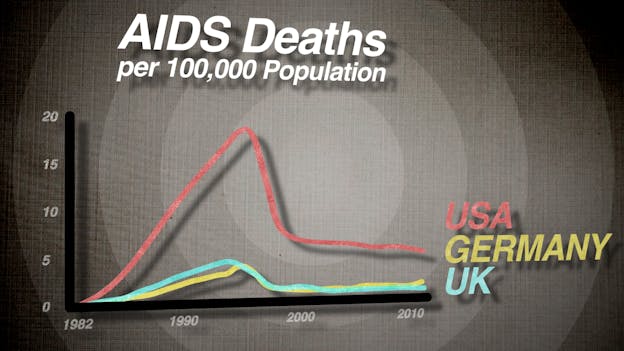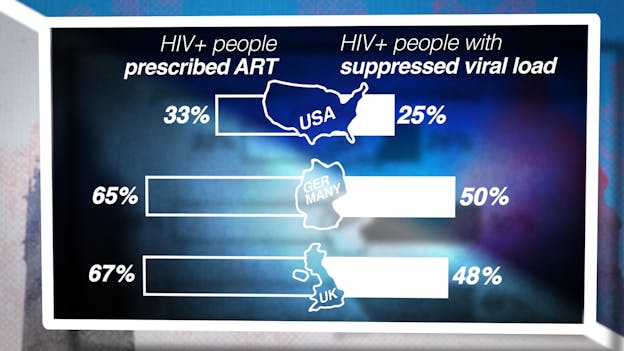Here's a snip from a story I wrote in The New Republic last May about how the AIDS epidemic has been way more severe in the United States than other developed countries:
In 2010, the United States had 47,500 new HIV infections. The entire European Union—with a population more than one and a half times that of the United States—had just 31,400.
So what gives? “Keeping people alive is about getting them diagnosed, getting them into care, then making sure they stay in care and on HAART,” Sabin says. “And that, unfortunately, is where the U.S. differs from the U.K.” It turns out that, just as the AIDS virus seems almost designed to perfectly exploit the weaknesses of the human immune system, treating it seems designed to exploit the weaknesses of our national health care system.
This winter I’ve been working on a video putting all the numbers and arguments in one place:
The numbers really are mind-boggling. New York City, for example, has lost more people to AIDS than Spain, Italy, the Netherlands, and Switzerland combined. In Germany, a country that (trust me) does not lack in the fields of gay sex and drug use, only 27,000 people have died of AIDS since the start of the epidemic. The U.S. has lost 636,000.

A big part of the story is differences in healthcare systems. After the introduction of anti-retroviral therapy, death rates fell across the board. But they didn’t fall as much in America as they did in Western Europe, and not as much among African-Americans as among whites.

But like the video says, it’s not as easy as just saying that our healthcare system sucks (even though it does). The virus arrived here earlier, spread faster, found populations that are harder to reach:
At the end of the day, it’s best understood as a function of health disparities writ large,” says Chris Beyrer, the director of the Johns Hopkins Fogarty AIDS International Training and Research Program. The core difference between the United States and Western Europe, he says, is that “we’re a much bigger, much more complex, and much more unjust country.
